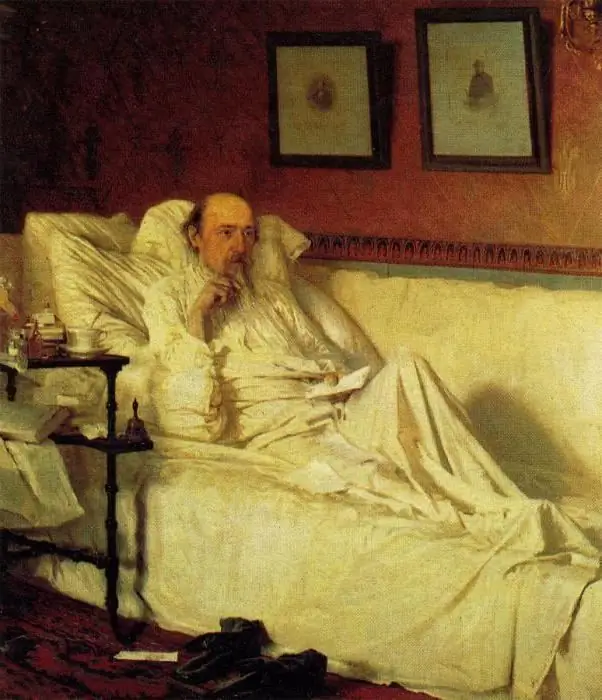2025 Author: Leah Sherlock | [email protected]. Last modified: 2025-01-24 17:46:25
Ivan Nikolaevich Kramskoy created two portraits of the great Russian poet. The works were written in a difficult time, in the oppressive tragic atmosphere of the last months of Nekrasov's life. Both of them are considered among the best in the gallery of portrait images, which Kramskoy created during his long creative life.
The portrait of Nekrasov was originally commissioned by Pavel Tretyakov for his collection, but subsequently prompted Kramskoy to paint a large picture.
First portrait: creation story

In the winter of 1877, the condition of Nikolai Alekseevich Nekrasov began to deteriorate rapidly. The seriously ill poet practically did not get out of bed, unable to write, he dictated his last works. Tretyakov, realizing that the days of the folk singer are numbered, urgently orders Kramskoy his portrait. The artist wanted to depict Nekrasov exactly as he saw him in those sad days: lying on pillows in bed, surrounded by his favorite things and objects that reminded him of his work and an incurable disease.
Tretyakov didn't like this idea. Patron and collectorconsidered that such an image would overshadow the heroic image of a folk poet. At the insistence of the customer, Kramskoy painted the usual bust portrait, classical in composition, depicting Nekrasov sitting straight, with his head half turned, with his arms crossed on his chest.
The customer was pleased with the portrait, but not the artist himself. Communication with the poet during the days of work on the picture made an indelible impression on Kramskoy. Even then, he decided to create a second canvas, on which he displayed a completely different image of the poet.
The second portrait of Nekrasov

This work was called "N. A. Nekrasov during the "Last Songs" period. A rather large canvas is literally made up of several small parts, like a mosaic.
The reason for writing the picture was the poet's increasingly aggravated illness. Each meeting was given to him with great difficulty. For the sake of a session of 10-15 minutes, Kramskoy often waited a whole day. As a result, only Nekrasov's head was painted from life, while the artist completed the rest of the picture in the studio.
The portrait of Nekrasov on the bed turned out to be both large-scale and intimate. This time, Kramskoy portrayed the writer exactly as he originally intended, painting not just a portrait, but creating a heroic image of a poet who devotes his last days to creativity.
Wrong date or secret sign
Kramskoy himself signed the second portrait with the date March 3, 1877. In fact, the artist completed the painting in the studio after the death of the poet, and it dates back to 1878. However, the datebred by Kramskoy, for himself and for the dying Nekrasov became special. It was on this day that the poet dictated his famous poem "Bayushki-bayu". Enthusiastic Kramskoy considered this work to be the best, and the last portrait of Nekrasov symbolically refers viewers to the day the poem was created.
Recommended:
Portrait in the art of Russia. Fine art portrait
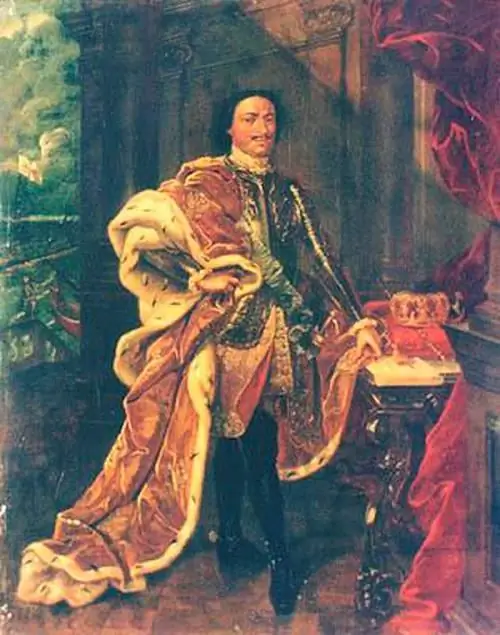
In this article we will consider a portrait in the art of Russia. The value of this genre lies in the fact that the artist tries to convey with the help of materials the image of a real person. That is, with proper skill, we can get acquainted with a certain era through a picture. Read on and you will learn the milestones in the development of the Russian portrait from the Middle Ages to the present
Genre portrait in art. Portrait as a genre of fine art
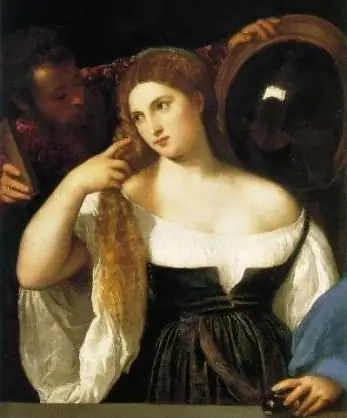
Portrait - a word of French origin (portrait), meaning "depict". The portrait genre is a type of fine art dedicated to conveying the image of one person, as well as a group of two or three people on canvas or paper
Portrait of Catherine II. Rokotov Fedor Stepanovich, portrait of Catherine II (photo)
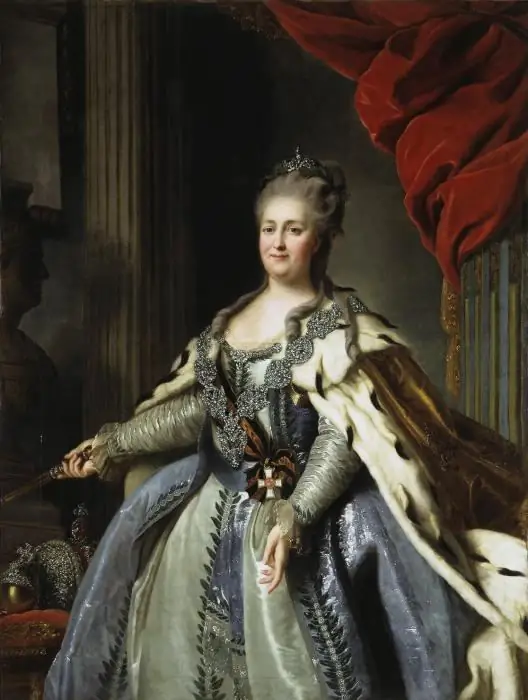
Catherine 2 is one of the most influential rulers in the history of the Russian Empire, whose image as a strong woman and powerful monarch was of interest to representatives of the art of the 18th century and is depicted in painting as the personification of the era
Portrait of S altykov-Shchedrin by I.N. Kramskoy

Ivan Nikolaevich Kramskoy was a remarkable Russian artist, inspirer and organizer of the Wanderers movement. In their works, they called for moving away from dry academicism and painting pictures that reflect the pressing problems of society. Kramskoy was an excellent portrait painter, and one of his best works is the portrait of S altykov-Shchedrin
Great portrait painters. Portrait painters
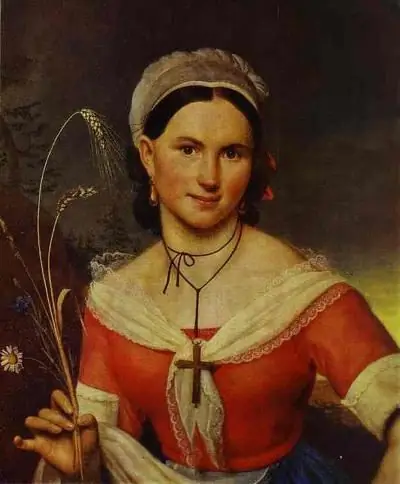
Portrait painters depict real people by drawing from nature, or reproduce images from the past from memory. In any case, the portrait is based on something and carries information about a particular person

